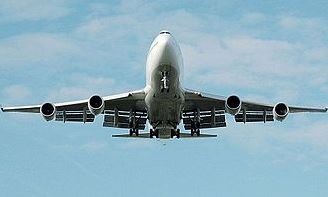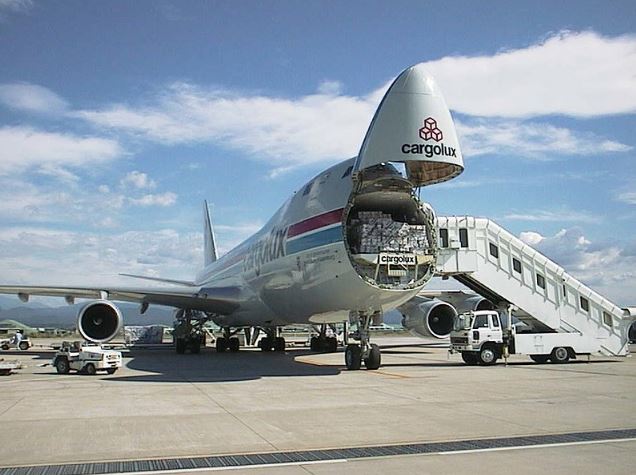Boeing Commercial Airlines is well known in the aerospace world because it is one the most prominent companies that manufacture aircraft. Boeing produces some of the best commercial, cargo, and military aircraft that are used all around the world.
The Boeing 747 was released in 1969 and became an instant hit. It was one of the first aircraft that had a wide body. The design caught on and revolutionized the aviation industry. An advanced variant of the Boeing 747, called the Boeing 747-400, was released in September 1984.
The Boeing 747-400 quickly became popular in the aviation industry and was used by Northwest Airlines, United Airlines, British Airways, and Lufthansa.
History
The Boeing 747-400 was unveiled at the Farnborough Airshow as a part of their Advanced Series 3000. This aircraft claimed to have a more efficient engine that could help reduce operating costs. According to Boeing, this would also have an additional 1000 nautical miles.
The aircraft was a massive success as it was the first wide-body airliner that the world had seen. It revolutionized air travel and made Boeing a major airplane manufacturer in the aircraft market.
However, before the widely successful Boeing 747-400, the Boeing 747-300 was released in 1980. This variant had a greater passenger capacity, which was achieved by stretching the upper deck. Besides high capacity, the Boeing 747-300 had little to offer. No changes were made to the range, flight deck technology, or construction material.
During this time, the 747s were also becoming costly to operate because of the conventional flight control system, fuel costs, and three-person flight crew. Due to the increasing competition, Boeing began considering developing an aircraft with significant upgrades.
These significant updates showed up in the Boeing 747-400, where they successfully made several changes. They reduced the operating cost by 10%, used new technologies, and added an extra 1000 nautical miles, an efficient engine, and an enhanced engine.
The Design
Initially, the company proposed the Boeing 747-400 to have minimal design changes in an effort to reduce developmental costs. However, the airline’s consultative group wanted more progressive changes, such as a new two-crew glass cockpit. These changes resulted in Boeing adding cathode-ray tube display technologies.
The autopilot was also updated to the one on the 757 and the 767. The Boeing 747-400’s software was also updated, and an altitude intervention mode was added.
The wingspan of the Boeing 747-400 was also altered and stretched to 17 feet or 5.2 m more than the regular 747. This change was achieved through wingtip extensions. Boeing also attached winglets that measured 6 feet or 1.8 meters to reduce the aerodynamic drag.
Despite stretching the wingspan, the wings were 27000kgs or 6000 pounds lighter. The reduced weight was due to new aluminum alloys. The horizontal tail was also adjusted and redesigned, resulting in a unique shape that allowed it to fit a 3300 US gallon tank.
The new and improved fuel tank increased the range by 350 nautical miles. The rudder travel was also increased to 30 degrees. The landing gear was also modified by adding larger wheels and carbon breaks.
There were other internal changes made as well. These changes included new materials, updated fittings, and a restyled cabin. The interior of the Boeing 747-400 had new cabin sidewalls, heat-resistant phenolic glass, larger storage bins, and carbon composite paneling.
Boeing also introduced an enhanced in-flight entertainment system. This system was named the Advanced Cabin Entertainment or Service system. It integrated four passenger intercom announcement zones, 18-channel audio capabilities, inter-cabin telephones, and passenger lighting into a single central system.
The aircraft also included an eight-bunk overhead crew rest installed above the aft cabin. There was also a second crew rest area. This rest area was located on the upper deck, which was behind the cockpit, and could be used by the flight crew.
Boeing 747-400 also used new engines, including the Pratt & Whitney PW4056, the Rolls-Royce RB211-524G/H, and the General Electric CF6-80C2B1F. These engines were highly efficient, offering lower fuel consumption without compromising on the thrust.
It also had a full-authority digital engine control that adjusted the engine performance for improved efficiency compared to the standard 747s. Boeing also selected a new auxiliary power unit which was manufactured by Pratt and Whitney Canada. This also helped reduce fuel consumption by 40% compared to previous APU designs.
The Boeing 747-400 includes the following improved features:
- Fuel-burning efficiency of about 4% was made possible by wingtip modifications and additional winglets.
- Glass cockpit design for two members, which was initially for three.
- More fuel tanks were added to increase the range.
- Installation of improved engines courtesy of renowned companies like Rolls-Royce, Pratt & Whitney, and General Electric.
Production
Before the launch, the final assembly of the Boeing 747-400 took place at Boeing’s Everett factory, which had seen the production of many 747s. After all the components were assembled, the aircraft was fitted with the PW4056 engines. The Boeing 747-400 was ready for its test flight by the end of 1987.
The first test flight was conducted under James Loesch and co-pilot Kenneth Higgins. This flight was supposed to fly six weeks earlier. Still, it was delayed due to delays in supplying components and troubleshooting the aircraft’s electronics.
The maiden flight took off from the site of the Everett factory, the Paine Field, and landed in the Boeing Field, located just south of Seattle. The 2-hour and 26-minute flight was uneventful and deemed a success.
However, following the flight test, Boeing faced several issues in the Boeing 747-400’s production process. This led to delivery delays of up to a month for the first 20 aircraft of this model. These delays were mainly caused by the complexity of the interior configuration.
The workers working on these aircraft were also relatively new and did not have the necessary experience. Therefore, the interior configuration required re-work, which was expensive. Boeing managed to resolve the issues early on in their production.
Sale Statistics for the Boeing 747-400
The Boeing 747-400 was a trendy model when it came out. Many famous airlines ordered their crafts. By 2005, Boeing had sold up to 695 aircraft around the world. It was considered the best jumbo passenger jet of all time.
As of 2007, the market value of a Boeing 747-400 aircraft was US $266.5 million. Since this aircraft is more than 20 years old, most airlines have grounded them. The maintenance and profits were not matching; instead, it was getting costly for the airlines to maintain it. United Airlines flew its last flight with 747-400 in November 2017.
Variants
747-400
The Boeing 747-400 was the original variant that was a redesign of the 747. These aircraft had an increased wingspan, additional winglets, a glass cockpit, and revised engines. The glass cockpit also removed the need to have a flight engineer. The Boeing 747- 400 also featured a stretched upper deck.
Most of the Boeing 747-400 were passenger models. A total of 442 were built.
747-400F
The F in 747-400F stands for freight. This aircraft was the freight version of the Boeing 747-400. It included all the updated features of the 747-400, but the upper deck was not stretched out in an effort to reduce weight. The Boeing 747-400F had a maximum takeoff weight of 397,000kg and a maximum payload of 124,000kg, allowing it to carry heavy items.
747-400M
The Boeing 747-400M was a passenger/freight or Combi variant designed initially to be called the Boeing 747-400 BC. This aircraft was based on the successful Combi version of the standard 747-400s. This newer version had a large cargo door fitted to the rear of the fuselage.
A locked partition separated the passenger cabin and the cargo area. The Boeing 747-400M also features additional fire protection, a roller-conveyor system, a strengthened main deck floor, and passenger-to-cargo conversion equipment.
747-400D
The Boeing 747-400D was a domestic aircraft with a high-density seating model. This plane was developed for short-haul flights that could carry many passengers simultaneously. The Boeing 747-400D was designed to replace the prior Boeing 747-100SR, which was used for short-haul, high-volume domestic Japanese flights.
The Boeing 747-400D could easily seat 568 passengers in the two-class configuration and 660 in the single-class design. This aircraft also lacked the wingtip extensions and winglets that were included in other models. The winglets would not have been helpful in short-haul flights and would have only added extra weight and cost.
747-400ER
The ER in Boeing 747-40ER stands for extended range. This aircraft was also referred to as the 910k, which signified its maximum weight. This increase in maximum weight was possible via modified landing gear and structural modifications.
The Boeing 747-40 was launched following an order by Qantas for six aircraft. It included having one or two additional body fuel tanks which could hold 3240 US gallons. However, Qantas was only interested in a single-body tank configuration.
These tanks were manufactured by Marshall Aerospace and were made using metal-to-metal honeycomb technology. This allowed the tank to achieve a high fuel volume-to-dry weight ratio.
Incidents involving Boeing 747-400
Unfortunately, the Boeing 747-400 was involved in several hull loss and performance accidents. Some of them are listed below:
September 23, 1999
Qantas Flight 1, flying from Sydney to London, overran the runway during heavy rainfall. Minor passenger injuries were sustained with repairable aircraft damage.
July 25, 2008
Qantas Airline Flight 30 bound to Melbourne Airport from Hong Kong made an emergency landing in Manilla due to a hole in its lower forward fuselage. No one was hurt during the chaos.
October 31, 2000
Singapore Airlines Flight operating a 747-400 was bound for Los Angeles when it crashed in a construction site moments after taking off. The plane caught fire, resulting in the deaths of 79 passengers and four crew members.
July 28, 2011
Asiana Airlines flight operating the freight variant 747-400F crashed into the Pacific Ocean. It was bound for Shanghai Airport. The crash killed two crew members on board.
April 29, 2013
National Airlines Flight 102, a 747-400F, crashed at Bagram airbase, killing all seven crew members.
January 16, 2017
Turkish Airlines Flight 6491, a flight 747-400, faced trouble landing in thick fog. The plane crashed into a residential area killing 39 people, 35 of whom were present on the ground.
Retirement
The Boeing 747-400s had become expensive to operate, due to which their resale and salvage value dropped steeply. After 20 years of flying, many airlines began retiring and replacing these planes with more efficient aircraft.
In most cases, these aircraft were replaced with wide-body twin-engine aircraft with a similar range. However, replacing these planes was also expensive, which is why many operators decided to fly the aircraft till their accepted useful life and then scrap them. Many believed that some variants of the 747, such as the 747- 400 converted freighters, were no longer a viable economic model. Therefore, they intended to scrap the model as soon as possible.
Conclusion
The Boeing 747-400 takes pride in introducing a golden era in aviation history. It was called a jumbo passenger jet that was popular among people and foreign airlines alike. You may or may not see the Boeing 747-400 flying in the sky now, but it will always remain a symbol of class.


